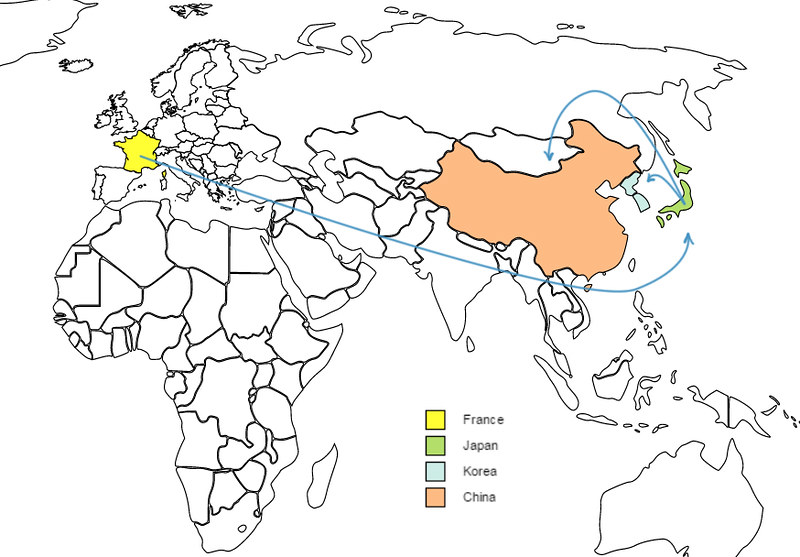This Omeka project is created for Dr. Kate Mondloch's "Digital Art History" course (Spring 2015) by Art History M.A. student Sangah Kim. The purpose of "Acceptance and Reinterpretation" is to examine early Western style oil paintings in East Asian countries and the influences among artists from different Asian countries.
In the early twentieth century, artists in China and Korea gained exposure to Western art through studying abroad in Japan. As a result, Western art in China and Korea was often reinterpreted through the lens of Japanese art. Although China, Korea, and Japan have a long history of close relationships, they developed art in conjunction with each of their own cultures. I will examine ways in which artists from Japan, Korea and China adapted Western art within their particular national contexts circumstances by their works.
The ultimate goal of this project is to help build art historical connections among the East Asian countries of China, Korea, and Japan. Throughout the exhibitions, we can examine the three countries' modern art field macroscopically, as well as analyzing three artists microscopically. With reference to Doshin Sato's method of comparative analysis in Modern Japanese Art and the Meiji State, I will try to consider each figure as representative of national artistic trends within the period. According to Chelsea Foxwell, "Sato encouraged scholars to understand East Asian artistic exchange as a 'weather map' with fluid trends that move over the region regardless of national boundaries."[1] In this regard, researching Asian art history from both the 'outer view' and the 'inner view,' as well as studying artworks and artists with an integrated method is important. Kuan-hsing Chen, in his book Asia As A Method, highlights the importance of knowing Asian countries' distinct histories, and a synthesis of Asian history. Asian society can be integrated after knowing each particular context, and it can be a new method of Asian studies. In this context, I will continuously question if we can define Asian art history "as a method", and whether it is possible to establish a broader East Asian art history.
[1] Doshin Sato, Modern Japanese Art and the Meiji State, Los Angeles, California: Getty Research Institute, 2011, 18.

